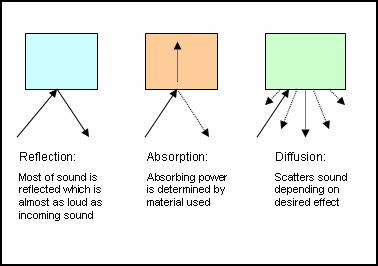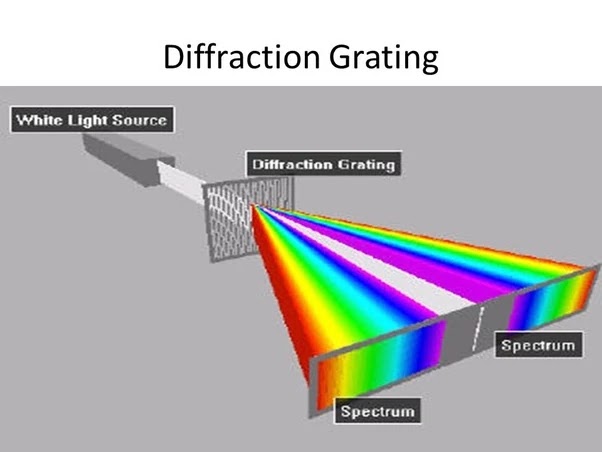The light waves that are visible to the naked eye are in the wavelength range of 400nm to 700nm and sound waves audible to. A diffraction grating is a.
Let’stalk about loudspeaker grilles- you know, those things that cover the front ofyour speakers and make them look boring. Many people, for whatever reason, seemto prefer their loudspeaker appearance with the grilles on. But grilles aren’tjust about the aesthetics of the speaker, they also protect it fromharm and abuse- like say, a rambunctious child or pet who may otherwise damagethe delicate cone of the woofer or dome of the tweeter. Most home audioloudspeaker grilles are removable though, so their use is optional for mostdomestic applications. Given how fussy audio enthusiasts can be, the use ofgrilles has been a point of strong personal preference for as long as therehave been home audio loudspeakers.
Hereat Audioholics, we have received many inquiries in the past pertaining to theimpact of speaker grilles on the sound quality. More specifically, somethingalong the lines of:
Sound Diffraction Examples Science
“Will my speakers sound better or worse with the grilleson?”
Since there are so many different speaker designs out there, the answer tothat question could never be an absolute yes or no, at least without knowingthe characteristics of that particular speaker. However, in our experience,grilles usually do not improve loudspeaker performance. In this article, wewill explain how and why grilles tend to have an adverse effect on thespeaker's performance, and we will also talk about how much they can actuallyspoil the sound quality.
- Another word for diffraction. Find more ways to say diffraction, along with related words, antonyms and example phrases at Thesaurus.com, the world's most trusted free thesaurus.
- Fenomenul de difracție este caracteristic pentru absolut orice valuri, de exemplu, electromagnetice sau valuri de pe suprafața apei. Acest articol este despre difracția sunetului.
- Learn the physics of waves with animations of waves, light and sound.
Speaker Grilles On/Off YouTube Videos Discussion
in our experience,grilles usually do not improve loudspeaker performance.
Inorder to talk about how a grille can affect the performance, we have to talk aboutdiffraction. Generally speaking, diffraction is how a wave is modified when itis deflected by some obstacle. In loudspeaker engineering, diffraction occurswhen the sound waves reflect off the speaker enclosure. Very simply put, whenthe sound pressure wave is produced by the driver, it will disperse at a wideangle, unless the wavelength itself is not as large as the surface area of thediaphragm acting on the air, such as the woofer cone or tweeter dome. A good speaker is designed so thatthe diameter of the driver’s diaphragm is smaller than the wavelength beingreproduced. This ensures wide-angle dispersion, instead of beaming like aflashlight. The sound waves can emanate at such a wide angle that itreflects off of the front baffle of the cabinet. The reflected sound waves fromthe front baffle of the speaker can reach the listener (or microphone) at avery slight time delay with respect to the sound coming directly from thedriver diaphragm and cause comb filtering: cancellation and summation effectswith the original sound.
Revampled JBL L100 Speakers - Quadrex foam grille (left) vs no grille (right)
Torestate loudspeaker diffraction more simply, it is when sound produced by thewoofer or tweeter bounces off the front of the speaker and interferes with thesound coming directly from the woofer or tweeter. One important point to makehere is that the wavelength of the sound frequency has to be shorter than thespeaker’s baffle surface in order to be reflected, so bass frequencies thathave long wavelengths don’t experience diffraction- they just bend aroundsmaller obstacles and surfaces as though they weren’t even there. It is thisreason why subwoofer grilles will not affect subwoofer sound at all; thewavelengths of those low frequencies are much larger than the speaker enclosureitself, let alone any grille frame. But sound waves of shorter wavelengths willbe affected by the size of the front baffle- and everything on it, includingthe grille. The grille is just more “stuff”, acoustic obstacles, for higherfrequency sound waves to diffract off of and cause interference patterns.
Table 1. Wavelengths of soundfrequency examples.
Table1 shows some examples of sound frequency wavelengths. We can see that thewavelengths at 1,000 Hz and below are too large to reflect off of a typicalhome audio speaker baffle, but 2,500 Hz and higher frequencies have wavelengthsthat are much more common sizes for speaker cabinet widths, and so are morelikely to be subject to diffraction effects.
the grille frame plays a bigger impact on diffraction than the fabric itself.
Weare not talking about the fabric that is often stretched over the frame of thegrille; we are talking about the frameof the grille itself. The fabric does very little to interfere with the sound, assuming the fabric is tautly stretched over the frame.Most grille fabrics are acoustically transparent and generally do not affectthe sound in an audible manner or even in a scarcely measurable manner. Thefabrics might attenuate the sound slightly in very high frequencies, but theeffects would be minor compared to the diffraction caused by the grille frame.The grille frame is a more substantial obstacle. Of course, not all grilleframes are the same, and some are more obtrusive than others. A grille with athick, protruding frame is going to cause a lot more diffraction than a grillewith a slight, minimal frame. But the frame of the grille is frequently just adiffracting object which can cause the speaker to have a rougher frequencyresponse than otherwise.
Picturedbelow are two grille frames: one that incurs a lot of diffraction (Fig. 1) andone that does not (Fig. 2). It can be seen that the thick grille in Figure 1uses two layers of wood that add up to a half inch thick frame. The top layerof the frame is the more constricting of the two and its proximity to thedrivers will increase the severity of diffraction. The frame of the grille inFigure 2 is very thin and keeps its distance away from the drivers.Furthermore, there is also some perforation in the grille frame that may help abit as well. This grille barely affects the speaker’s response at all.
Figure 1. An example of a grille thatwill cause significant diffraction due to the thick and broad frame.
Figure 2. An example of a grille thatdoes not cause much diffraction due to its thin frame.
Tosee how much grilles can affect speakers’ responses here is are a few examplesof speakers from past reviews, picturing both the grilles and their responsedifference:
Figure 3. Outlaw Audio BLSv2 grille.
Figure 4. Outlaw Audio BLSv2responses with and without the grille.
InFigure 3 and Figure 4 we can see the grille design of the Outlaw Audio BLSv2and its effect on the response. Theeffects of the grille are evident but not severe on this excellent loudspeaker.This grille design isn’t acoustically invisible, but it isn’t an especially badgrille with respect to its effects on the response. One thing that sets thisgrille apart from others is that, as we mentioned in the review, it is reallytough and does a superb job of protecting the drivers. Since the grille framehere is very slight, the major contributor to the grille’s deformation on theresponse may be comb-filtering from the perforation pattern of the metalgrille. It should also be noted that the audibility of this effect on theresponse is very much in question since diffraction effects are not likesteady-state resonances. This is discussed further below.
Character logo design free. Figure 5. Dayton Audio MK402 grille.

Figure 6. Dayton Audio MK402responses with and without the grille.

